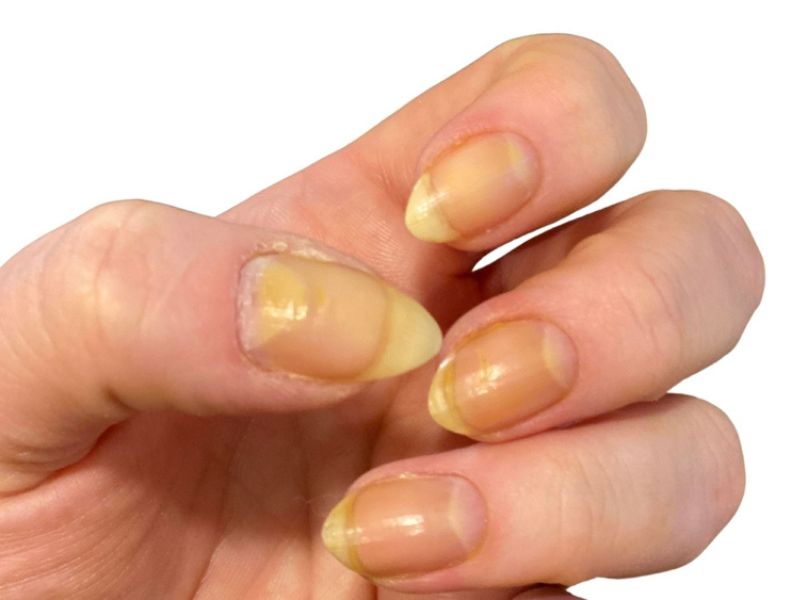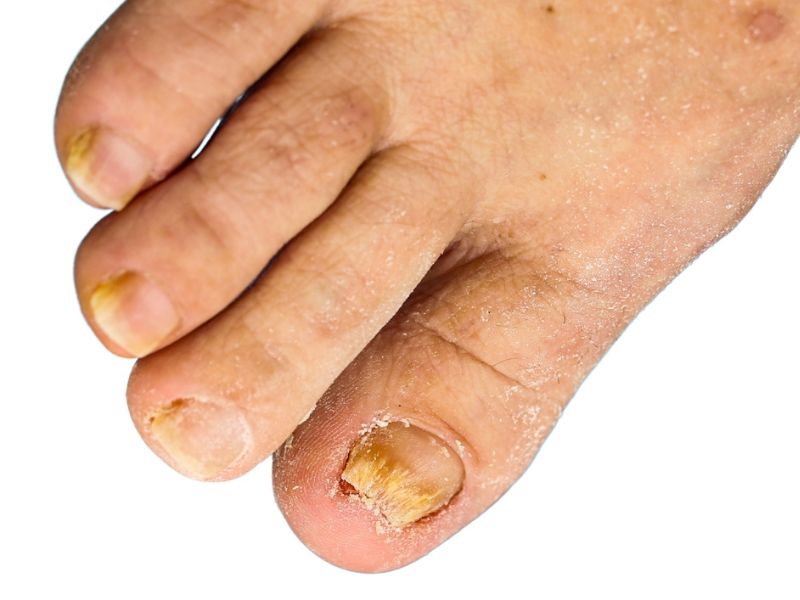Our nails are not just a protective layer on our fingertips; they can also be indicators of our overall health. Healthy nails are usually pinkish-white, smooth, and free from any discoloration. However, if you’ve noticed that your nails have taken on a yellowish hue, it might be a sign that something is amiss. According to dermatologists, here are five things that could be causing your nails to turn yellow.
Fungal Infection
One of the most common culprits behind yellow nails is a fungal infection known as onychomycosis. Fungal infections thrive in warm and moist environments, making our nails an ideal breeding ground. If you notice yellow discoloration, thickening, and brittleness, it’s crucial to seek medical attention for proper diagnosis and treatment.

Image Credit: Shutterstock/Sheshan2025
Nail Polish
Wearing dark-colored nail polish, especially without a protective base coat, can stain your nails over time. The pigments in the polish can seep into the nail plate, leading to yellowing. To prevent this, always apply a clear base coat before using colored nail polish and occasionally give your nails a break from polish.
Smoking
Smoking cigarettes poses numerous health risks and can also cause yellowing of the nails. The harmful chemicals in cigarettes, such as nicotine and tar, can stain the nails and the surrounding skin. Quitting smoking benefits your overall health and can help restore the natural color of your nails.

Image Credit: Shutterstock/Sheshan2025
Medical Conditions
Certain underlying medical conditions can contribute to yellow nails. Conditions such as thyroid disorders, psoriasis, and diabetes can impact nail health and lead to discoloration. If you suspect an underlying health issue, consult a healthcare professional to determine the cause and appropriate treatment.
Poor Nail Hygiene
Neglecting proper nail hygiene can result in yellowing. Bacteria and debris can accumulate under the nails, leading to discoloration and potential infections. Regularly clean and trim your nails, and avoid excessive use of nail products that may damage the nails.